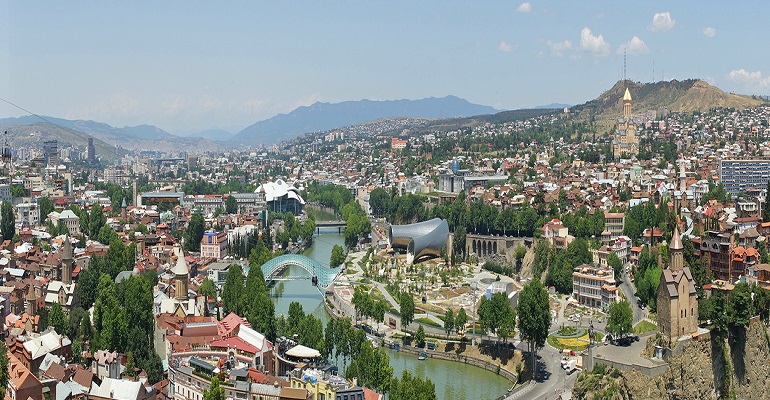
Tbilisi, the capital of Georgia, is a city that beautifully blends ancient history with modern charm. Located on the banks of the Kura River, it stands as one of the top tourist destinations in the region. Founded more than 1,500 years ago, Tbilisi has grown into a vibrant cultural and social hub. With a population of around 1.5 million, it is the largest city in Georgia and the country’s most significant center in terms of both economy and culture.
Top Tourist Attractions in Tbilisi
Narikala Fortress: One of Tbilisi’s oldest landmarks, Narikala Fortress sits atop a hill and offers stunning panoramic views of the city. Visitors can reach the fortress via the cable car, enjoying breathtaking views along the way.
Peace Bridge: A standout example of modern architecture in Tbilisi, the Peace Bridge connects the two halves of the city. Its glass structure lights up at night, giving the city a contemporary and elegant atmosphere.
Heydar Aliyev Park: A spacious park featuring lush greenery, Heydar Aliyev Park is perfect for leisurely walks or cultural events. It’s an ideal spot for outdoor relaxation in the heart of the city.
Botanical Garden: A peaceful escape from the hustle and bustle of Tbilisi, the Botanical Garden is home to a wide variety of local and international plants. It’s a nature lover's paradise.
Forest Waterfall: Located on the outskirts of Tbilisi, the Forest Waterfall offers visitors the chance to enjoy beautiful natural scenery, with forested areas and cascading waterfalls to explore.
Queen Tamara Statue: A tribute to Georgian strength and hospitality, this famous statue stands on a hill overlooking the city, offering one of the best views of Tbilisi.
Freedom Square: A central square that serves as the heart of Tbilisi's social life, Freedom Square is surrounded by historic landmarks that reflect the city’s rich history.
European Park: A peaceful place to unwind, European Park features wide green spaces, walking paths, and cycling tracks, making it an excellent spot for outdoor activities.
Shardeni and Rustaveli Streets: These vibrant streets are the cultural lifeblood of Tbilisi, home to important landmarks such as the old parliament and the opera house. Shardeni and Rustaveli are also filled with charming cafes, unique shops, and cultural attractions that showcase Georgia’s heritage.
Sulfur Baths: Located in the historic Abanotubani district, Tbilisi’s sulfur baths are one of the city’s most iconic features. The hot mineral waters provide a relaxing experience and are deeply embedded in Tbilisi's ancient healing traditions.
Svetitskhoveli Cathedral: One of the most important religious landmarks in Tbilisi, this cathedral is known for its unique architecture and massive white dome, making it a symbol of the city.
How to Get Around Tbilisi
Tbilisi offers a convenient and diverse public transport system, making it easy for visitors to navigate the city. The metro system connects key areas of the city and is fast and efficient. Buses and trams are also commonly used and provide a comfortable way to get around. Visitors can also use taxis or ride-sharing apps like Yandex Go and Uber for a hassle-free experience. For a more leisurely way to explore the city, bikes can be rented at various locations around Tbilisi, offering a fun and eco-friendly way to see the sights.
Best Time to Visit Tbilisi
The best times to visit Tbilisi are during the spring (April to June) and fall (September to November) when the weather is mild and pleasant. Summer can be quite hot, so many visitors prefer cooler months for their trip. Winter in Tbilisi is magical, with snow covering the city, making it an excellent destination for winter lovers seeking a unique, snowy experience.